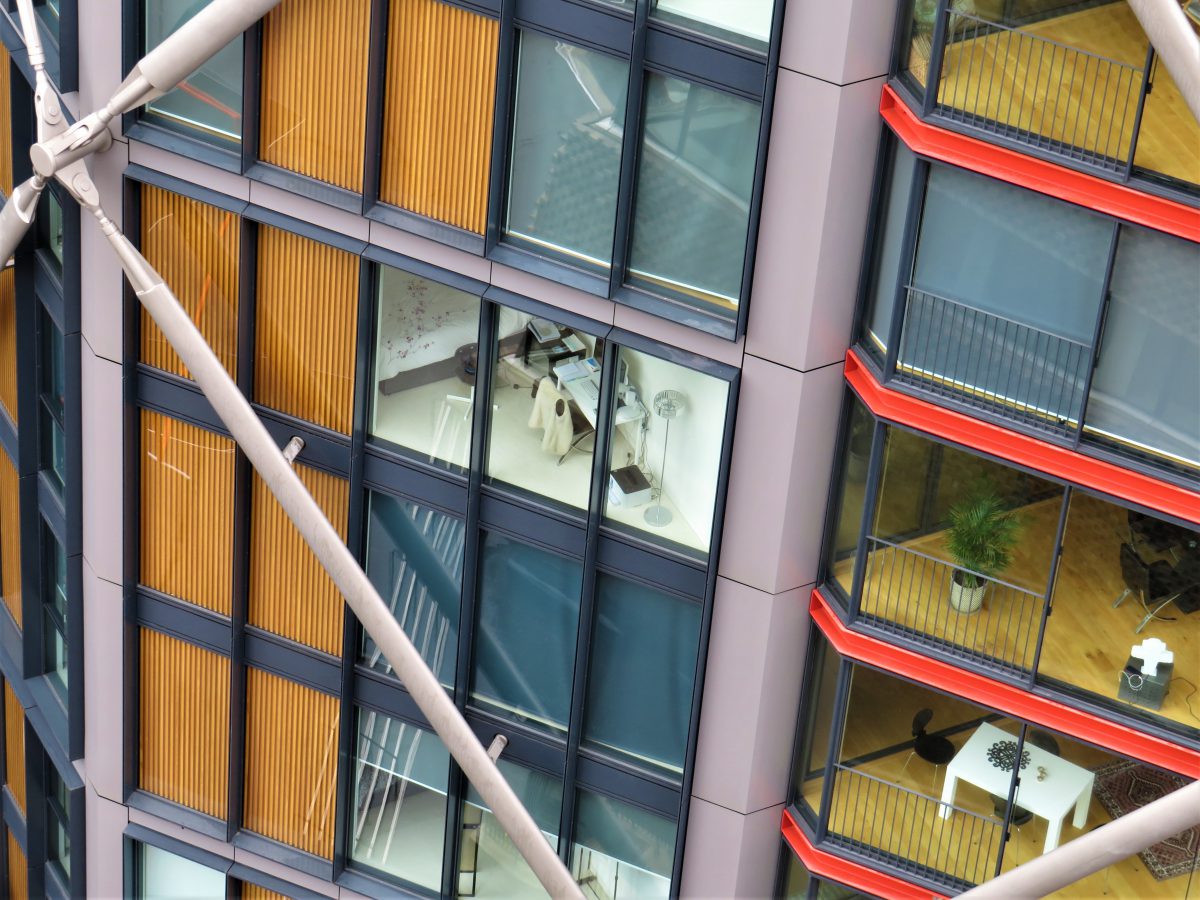HOW WORK WORKS Part II
Here at Upflex, we’re dedicated to understanding the future of work and are always looking at the science behind work. In the process of preparing webinars and white papers, we research the heck out of topics innovative companies are talking about.
Last month in our first installment, How Work Works, we talked briefly about the world behind office layout and design components. The pros who run some of the most innovative coworking companies (Convene, Industrious, Serendipity Labs, WorkBar, Blank Spaces, et al) are really tuned into these concepts and have proven to corporations of all sizes, industries, and ages that productivity and well-being can be positively impacted by materials, colors, layouts, plants, and more.
Today we’re taking a different view of the subject, looking at the kinds of work we do and where we do it. To start, let’s just share that we have now finished re-reading one of the best books about how our minds work when we work. If you can find some time, Cal Newport’s best-selling book Deep Work is really worth it. He easily explains some great rules for focused success in our multi-tasking, hyper-distracted world. If it is the only book you manage to read in the next 12 months, you won’t regret it.
He specifically mentions Facebook’s massive ‘open office” layout at their HQ designed by the world renowned architect Frank Gehry. Over three thousand employees have a moveable furniture option spread over a 10-acre expanse. He also touches on Square’s building in San Francisco (the old San Francisco Chronicle Building). Both were configured to experience what is called “Serendipity,” or the chance meeting and exchange that can fire off creative solutions, new networking opportunities, and simply “walking by each other and teaching new things.”
Early Innovative Work Office Design

These are notnew trends; Bell Labs in Murray Hill, NJ pioneered the theory of innovative work office design. Mervin Kelly, an American physicist, engineer, and president of Bell Labs from 1951 to 1959 (where DSL, cell phones, fibre optic cable networks, the transistor, solar cells, laser, and satellite communications were invented, et al) guided the construction of their new offices in a way that would intentionally foster interaction between their diverse mix of scientists and engineers.
Kelly dismissed the standard university-style approach of housing different departments in different buildings and instead connected the spaces into one contiguous structure joined by long hallways — so long that when you stood at one end it would appear to converge into a vanishing point. As Bell Labs historian Jon Gertner noted, “travelling the hall’s length without encountering a number of acquaintances, problems, diversion and ideas was almost impossible. A physicist on his way to lunch in the cafeteria was like a magnet rolling past iron filings.”
This strategy, mixed with Kelly’s aggressive recruitment of some of the best talent the world had to offer, yielded some of the most concentrated years of innovation and creativity in the history of modern civilization. Beside the aforementioned concepts and technologies that were born in Bell Labs, one major achievement not mentioned was that their astronomers won the Nobel Prize for empirically validating the Big Bang theory!
Office Space Layouts + Work
So, back to “how it works” and why Bell Labs was onto something ginormous. Interestingly, Cal Newport’s book on Deep Work highlights that office space layouts can be either conducive to or harmful to work output. It really just depends on what you are trying to do. In other words, to ensure work is fostered and productive, define what kind of work one is doing and then put yourself into that physical environment when you need to.
He opines that some trends in office layouts or strategy (like coworking and hoteling) are conducive to work and productivity, but points out that when you need to do what he calls deep work, be careful. The key is to find a place or a solution that allows one to be in the RIGHT environment, “on-demand.” Deep work requires a quiet, undistracted vibe, preferably soundproofed.
Specifically Newport references the buildings at MIT’s STATA Center (also by Frank Gehry) noting that the offices are arranged around large common spaces and incorporate open stairwells between adjacent floors, again, in a determined effort to encourage serendipitous encounters. He also mentions the intentional focus on door jambs and ensuring soundproofing on private offices.
By incorporating soundproofed offices connected to large common areas, we see what is called a hub and spoke architecture of innovation that supports BOTH Deep work AND random encounters that can be the ignition of an amazing encounter, creating inspiration, innovation, partnerships and energy that can motivate and reward inner needs of all kinds of workers. Coworking spaces have mastered this idea.
The Third Place
Of course we realize that most of you reading this are not building offices or designing them; you may not even be involved in decisions about the real estate your firm occupies or whether you or your team can remote work. But you’re probably working in an office or from home, and by virtue of the fact you are still reading, you are interested in the Future of Work.
No matter who you are, the takeaway should be to understand that companies today can stay relevant and innovative when looking at workplaces by adding the term ‘Third Place” to their vocabulary. (In case you are not yet familiar with the concept, the “First Place” is your home, the “second place” is the corporate office/campus/hq.)
Today the third place is emerging as a real alternative and is driving the future of work.

Worker productivity, collaboration and worker health are good reasons to join the “third place” world, but the biggest reason for companies to seriously consider corporate third places is worker engagement.
Third place is somewhere other than home or office where you work. In college we had our dorm room and classroom, and the third place was either the library or the study hall. The neighborhood Starbucks might make a good latte, but can one really work there? What about the airport lounge or in a hotel lobby? These are clear examples of the emerging Third Places, but are you productive there?
Productivity in Third Places
Ray Oldenburg, one of the pioneers in the Third Space concept, is a true visionary. He is what is called an urban sociologist and he often writes about the importance of informal public gathering places. In his book The Great Good Place (1991), Oldenburg demonstrates how and why “third places” are central to local democracy and community vitality.
He points out that the technology has made our work life and home life so intertwined and this has (obviously) changed things radically. “If you go back 40 years, the thinking in the corporations was: The longer we could keep each employee at the desk, the more the productivity. And that’s just been shot to pieces,” he says. “I think that a corporate third place would have some part in holding on to good people… making sure they get what makes them happy. It should make a difference for the company.”
Steelcase, a company offering a range of architecture, furniture and technology products and services “designed to help people reach their full potential,” has a comprehensive portfolio anchored by three core brands: Steelcase, Coalesse and Turnstone.
Lewis Epstein head of Coalesse, leads the movement and is quoted often in discussions about the “third space.” He notes, “the demand for performance continually ratchets up in a competitive marketplace; what do 21st-century workers need and deserve? Something has to give way to create a more humane environment that can sustain the 21st-century workforce. We see physical space as an essential element and our inherent tie to it remains the foundation for where work gets done.”
Fostering higher quality interactions, allowing employees to rejuvenate and helping them to feel inspired will support employee wellbeing, and ultimately lead to higher attraction, retention, and engagement.
Making Third Places Reality
We know intimately that coworking spaces really get all this, and while you may not be interested in or responsible for adding the expense of leases, today you can have your cake and eat it too.
Upflex was built on the idea that ensuring worker satisfaction and increasing productivity is possible by providing workplace flexibility on-demand. As such we have some concrete suggestions about how you can get a head start in the migration to what is now being called the Third Place.
We encourage you to ask the right questions about new ways you and your team can help create the workplace of the future.
To help you out, we came up with the ones our clients asked before signing up with us.
- Are we a firm that takes care of our people?
- Are we enabled to do work at our best?
- Do we sometimes need to get into a 3rd space to feel energized and motivated?
- Are we growing rapidly?
- Are we looking for ways to attract the best talent?
- Are we encouraging wellness and work life balance?
- Do we get to work from home?
- Does our team work in an office but want to get into an isolated area where we can brainstorm and focus on a deadline or project?
If the answer to any question above is yes, then champion the idea of being able to provide a third space option on-demand that enables you or your team to do the kind of work you need to do on occasion (collaborate, focus, brainstorm, learn or just network). Thousands of the most amazing coworking spaces now exist, and so many base their design inspiration on the vision of Bell Labs and MIT’s Stata Center: offering an area where one can focus, one can collaborate, one can socialize, and one can learn. Being a part of the third place movement is at your fingertips — join the movement and ask your company to offer the Upflex option so you can book where you want to work today.
Watch this space for installment 3 where we celebrate the winners of the annual When Work Works Awards! (Yep, it’s the “Oscars for Workplace Flexibility” annual awards ceremony.)


